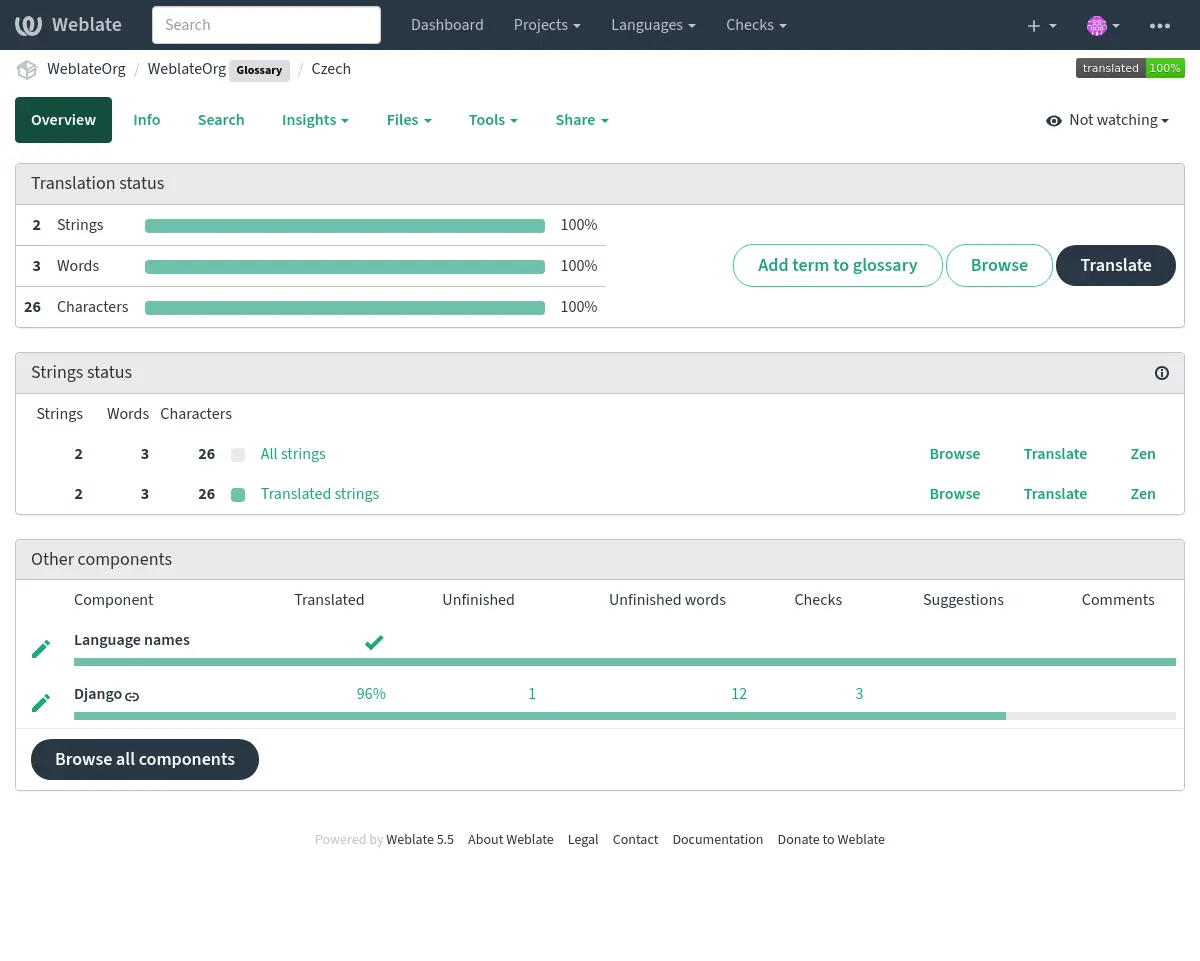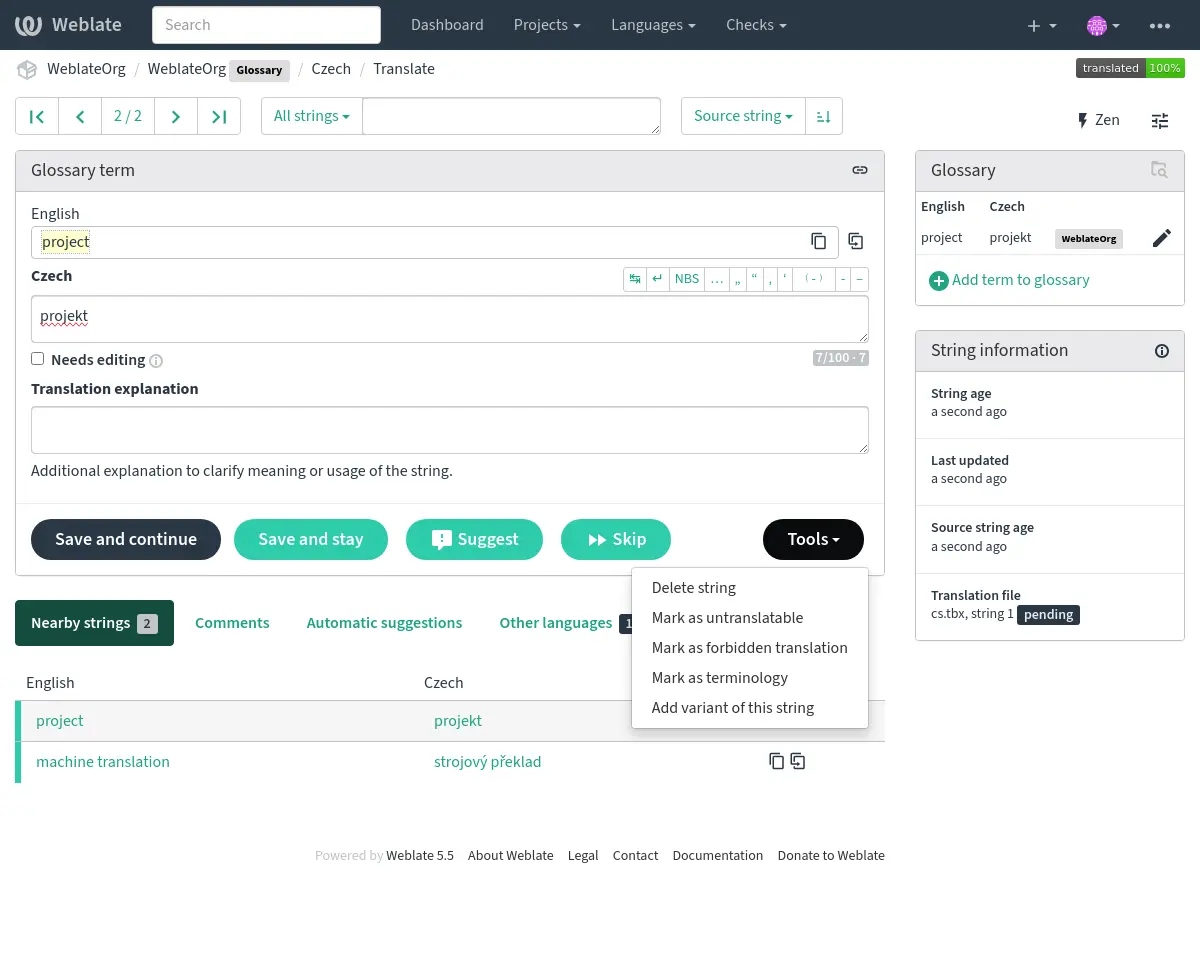Słownik¶
Each project can include one or more glossaries as a shorthand for storing terminology. Glossary easify maintaining consistency of the translation.
A glossary for each language can be managed on its own, but they are stored together as a single component which helps project admins and multilingual translators to maintain some cross-language consistency as well. Terms from the glossary containing words from the currently translated string are displayed in the sidebar of the translation editor.
Podpowiedź
The glossary terms are not used in quality checks unless you enable that, see Nie jest zgodny z słownikiem for more information.
Zarządzanie słownikami¶
Zmienione w wersji 4.5: Glossaries are now regular translation components and you can use all Weblate features on them — commenting, storing in a remote repository, or adding explanations.
Użyj dowolnego komponentu jako słownika, włączając Użyj jako słownika. Możesz utworzyć wiele słowników dla jednego projektu.
An empty glossary for a given project is automatically created with the project. Glossaries are shared among all components of the same project, and optionally with other projects using Udostępniony w projektach from the respective glossary component.
The glossary component looks like any other component in Weblate with added colored label:

Możesz przeglądać wszystkie terminy w słowniku:

lub edytować je jako dowolne tłumaczenia.
Słownik terminów¶
Glossary terms are translated the same way regular strings are. You can toggle additional features using the Tools menu for each term.

Terminy nieprzetłumaczalne¶
Added in version 4.5.
Flagging certain glossary term translations read-only by bulk-editing, typing in the flag, or
by using Tools ↓ Mark as untranslatable means they can not
be translated. Use this for brand names or other terms that should not be changed in other languages.
Such terms are visually highlighted in the glossary sidebar.
Zobacz także
Zabronione tłumaczenia¶
Added in version 4.5.
Flagging certain glossary term translations as forbidden, by bulk-editing,
typing in the flag, or by using Tools ↓ Mark as forbidden translation
means they are not to be used. Use this to clarify translation when some words are
ambiguous or could have unexpected meanings.
Zobacz także
Terminologia¶
Added in version 4.5.
Flagging certain glossary terms as terminology by bulk-editing, typing in the flag,
or by using Tools ↓ Mark as terminology adds entries for them
to all languages in the glossary. Use this for important terms that should
be well thought out, and retain a consistent meaning across all languages.
Zobacz także
Warianty¶
Variants are a generic way to group strings together. All term variants are listed in the glossary sidebar when translating.
Podpowiedź
You can use this to add abbreviations or shorter expressions for a term.
Zobacz także
Glossaries in automatic suggestion¶
Added in version 5.3.
Following automatic suggestion services utilize glossaries during the translation:
The glossary is processed before exposed to the service:
Duplicate source entries are not allowed, any additional entries with the same source are skipped.
Any control characters and leading and trailing whitespace are stripped.
Zabronione tłumaczenia are skipped.
Informacja
Many services store glossaries server-side and enforce limit on the number of saved glossaries. Weblate always deletes the oldest glossary if it runs out of space.